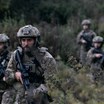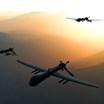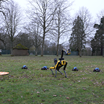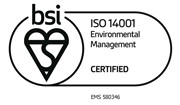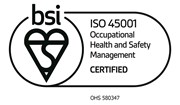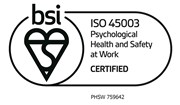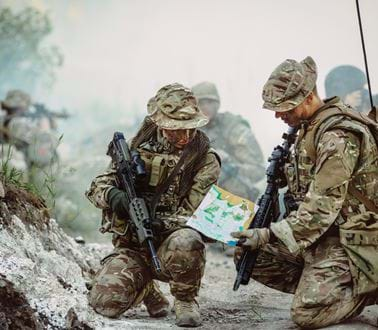
Soldiers: the vital link
We recognise that people, not equipment, are the critical component in all operations. That said, we also understand the significant physical and cognitive burden faced by our warfighters and understand how the application of technology can help reduce both of these factors.
Linking tactical and operational
The deployed soldier provides the vital link from the tactical to the operational picture. Communications systems have demonstrated time and again their criticality in modern warfare, relaying vital information to deployed units and conversely providing situational awareness to inform the common operating picture.
Timely, resilient, assured communications are key to providing this seamless information flow, enabling positional information to be shared and soldiers to understand where other members of their team are situated, thereby allowing co-ordination of the physical battlespace.
COTS enabled warrior
Commercial technology is becoming common place in modern theatres of operation. These technologies provide the opportunity to leverage investments made by ‘big tech’ firms that can be adapted and subsequently adopted by warfighters. User friendly interfaces reduce both time to train and the cognitive burden, ensuring soldiers are able to focus on insights that inform their decision making. Smartphone and tablet usage present excellent technology platforms that provide the opportunity to process, exploit and disseminate intelligence product at the tactical edge.
Use of these technologies can be conducted with either limited or no user input, exploiting the platforms processing capacity to leverage advances in Artificial Intelligence and Machine Learning. They enable the hosting of Battle Management Applications (BMA), providing user interfaces that allow operators to comprehend the common operating picture. They are also re-configurable and able to support the next mission, with the added benefit of being hardware agnostic. This enables evergreen, evolutionary capability development to be realised.
Open by design
Exploiting the benefits of COTS technology requires openness at the core of soldier as a platform. Open APIs with a reference architecture create conditions that enable the soldier as a platform ecosystem to evolve, exploiting advances in technology and allowing the extension of the baseline system capability.
One example of this is integrating in small UAS to provide organic ISR, which is in turn integrated into the BMA or leveraging smartwatches. This allows monitoring of heart rate and stress levels, leading to a deeper understanding of the physical burden faced by our operators. Technology doesn’t stand still and neither do our warfighters, so a solution that can accommodate the constant evolution of both is necessitated.
Software defined convergence
Software defined radios (SDRs) present new and exciting possibilities for reducing the size, weight and power burden faced by our warfighters. Advances in the hardware and corresponding software provide an ever increasing set of options for convergence on the soldier. Whereas, historically, a soldier may be expected to carry communications, electronic countermeasures and electronic surveillance equipment, the future is for the soldier to be equipped with one hardware platform that can be either manually or dynamically re-configured based on a mission or a specific activity as part of that mission.
The benefit is that, as well as reducing the SWAP burden, the cost of training, fielding and supporting a converged capability is significantly reduced. This enables investment and re-purposing of bespoke hardware platforms to support changing configurations required to achieve desired mission outcomes.

Talk to the experts
Interested in understanding more about the soldier as a platform and how our solutions can help? Talk to an expert.
Related news, insights and innovations
Find out more about our cutting-edge expertise.










